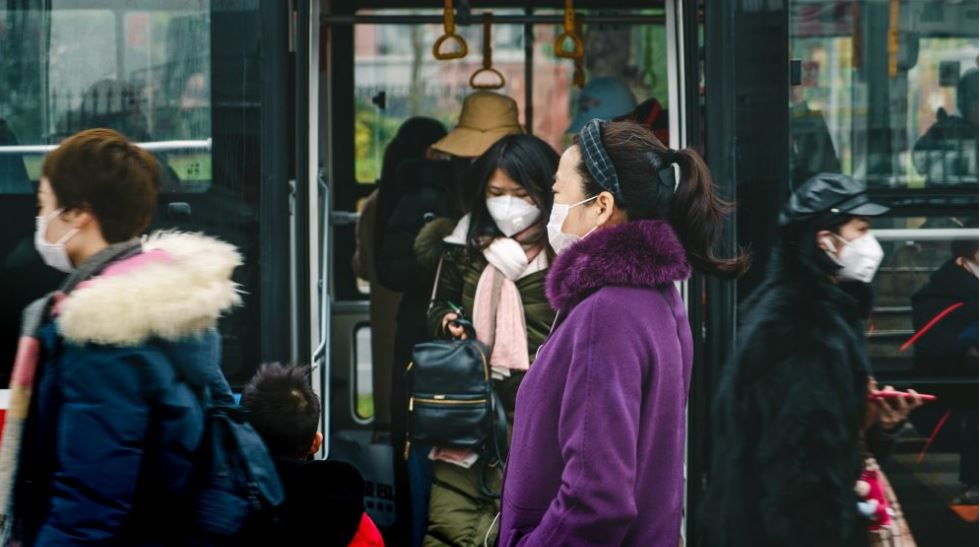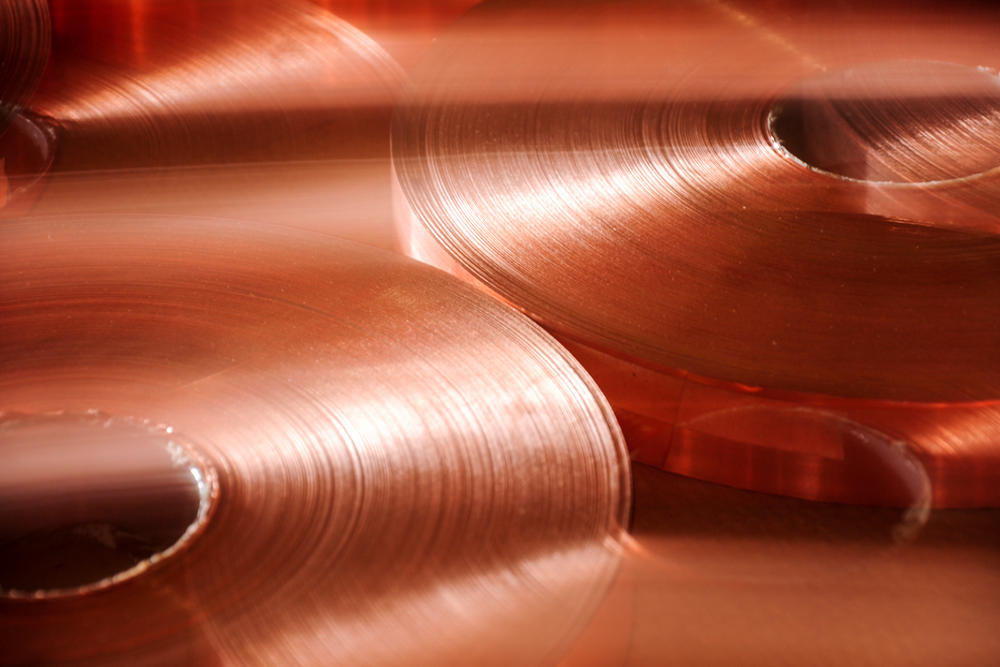
Copper analysts at Wood Mackenzie (Wood Mac) have released a report on the novel coronavirus and its impact on the copper market.
The novel coronavirus (or COVID-19) was first reported in Wuhan, the capital city of the Hubei Province, China, in December 2019. The outbreak was declared a public health emergency of international concern by the World Health Organisation (WHO) on 30 January 2020.
According to WHO’s 27th Situation Report, as at 16 February 2020, there were 51,857 laboratory-confirmed cases of COVID-19, globally.
China has taken a number of measures to contain the spread of the virus, including quarantining all the cities in the Hubei Province; the central government extending the Chinese New Year holiday by 3 days to 2 February 2020; and many local governments extending the delay further – asking companies to not resume work until a later date e.g. 10 February.
As a result, logistics and people movement have been impacted. Trains and flights have been cancelled with (several) checkpoints set up on the roads. Land freight, especially inter-provincial transportation, has also been significantly affected.
Given the rapid development of this public health crisis, on 6 February 2020, analysts at Wood Mac released a report which offers a more qualitative look at the impact of the outbreak of COVID-19 on the copper market. The copper team at Wood Mac plans on releasing a follow-up report with a more quantitative analysis shortly.
Limited impact on smelter and refinery production for now
Unlike copper fabricators, smelters and refineries did not stop operating over the Chinese New Year national holidays (this is common practice in China and consistent with previous years).
Even the extended holidays and the reduced number of employees able to return to work has had little impact on smelter and refinery operations.
However, according to Wood Mac analysts, this does not mean there are no risks to smelter production.
The two main concerns are around the raw material freight movement and acid sales.
Freight of concentrate to Daye continues, but taking longer
The Daye smelter and refinery is located in Huangshi, Hubei province, producing 500 kilotonnes per annum (ktpa) of refined copper, including 300 ktpa primary production and 200 ktpa from purchased blister and anode.
As all the cities in Hubei Province have been quarantined, Daye is the largest smelter of concern among the Chinese operations.
Concentrates are typically shipped to Huangshi Port along the Yangtse River and then trucked to the smelter.
Wood Mac analysts have heard that it is taking longer for concentrates to reach the smelter but as yet there has been no impact on its production.
“Aside from concentrate freight, what we are hearing from the market is that there is a general loss of efficiency across the concentrates supply chain from ports to smelters due to restrictions on movement and extension of holidays for couriers, customs brokers, customs, etc.,” the Wood Mac copper team states.
They note that delay in delivery of concentrates is also being experienced by many other smelters in China.
Acid is a big threat to smelter production
According to estimates from Wood Mac analysts, for a tonne of primary copper production, Chinese copper smelters are producing an average of 3.6 tonnes of sulphuric acid.
It is critical for copper smelters to sell and ship the acid before acid storage is full, otherwise, copper production will be impacted and in extreme cases suspended.
Hubei is the largest phosphate fertiliser producer in China, the most important downstream product of sulphuric acid.
The analysts understand that Hubei accounts for roughly 20 per cent of total sulphuric acid consumption in China, which it sources from local smelters as well as those in neighbouring provinces, including Jiangxi, Anhui and Henan.
As all the cities in Hubei are quarantined, the utilisation rate of acid consumers in Hubei has declined and many smelters are now having difficulties selling their acid.
In some cases, smelters can find a buyer for their acid, but are finding it difficult to ship the acid due to the virus’ impact on the supply chains. As a result, acid inventories at smelters are rising.
In general, smelters in most provinces in China have a challenge selling their acid given the state of the domestic fertiliser industry and the Governments’ aim to achieve zero growth in fertiliser usage in China in 2020.
Some coastal smelters have been more than happy to export their acid at FOB $0/t if they can, given that there is no domestic demand – this was already the case in the latter part of 2019.
According to one major primary smelter interviewed by Wood Mac, if the acid disposal situation does not improve over the next few weeks, they will have to cut the utilisation rate by 30 per cent.
Other smelters have reportedly expressed the same view, albeit they did not provide a time frame.
Disruption already seen at some smelters
As pressure on acid storage mount, Guixi, the largest smelter in China, started to reduce the amount of concentrate charged into the furnace in the first week in February.
Due to the high inventory of acid and difficulties obtaining some other consumables, Tongling Nonferrous started to reduce utilisation rates at its smelters in the city of Tongling, i.e. Tongling Jinchang (Ausmelt), Tongling Jinguan and Jinlong.
Wood Mac copper analysts understand that utilisation rates have been reduced to 70-90 per cent at these smelters.
How long production cutbacks will last or whether there will be further curtailments will depend on when the state of emergency, due to the virus, will be revoked.
Elsewhere in China, one of the major primary smelters in East China has had significant difficulties obtaining imported concentrates trucked to site from the port.
Due to a lack of concentrate, the smelter has started its maintenance ahead of schedule.
The maintenance, which was originally scheduled for March, started by the end of January and is expected to last for roughly 30 days.
If the coronavirus situation draws to a close before maintenance is completed, and concentrate deliveries can be resumed, the analysts state that there should be minimal impact on production from this smelter.
At another inland smelter, purchased concentrate has not been able to be delivered.
Currently, this smelter is relying on the inventories on-site, but Wood Mac analysts say they seem optimistic that the transportation issues can be solved before production is impacted.
As at the report’s release, 6 February 2020, smelters cutting production have a total primary capacity of 2.7 Mtpa, with another 1.7 Mtpa primary smelting capacity at risk.
Acid related problems are the biggest threat to smelter production under current circumstances.
According to the current situation, the primary production loss is over 60 kt contained copper in February assuming smelting capacity at risk all maintain full operation.
Going forward, if the epidemic can be brought under control in March, the loss of production could be partially compensated for over the rest of the year.
But if the state of emergency continues, the smelters will have to further reduce utilisation rates and more smelters will have to cut production.
Construction of new projects will be delayed
Under the impact of the state of emergency, construction in China has been suspended. The copper analysts have identified two copper projects that are facing risks of delay.
Chifeng Jinjian’s 260 ktpa relocation was scheduled to be commissioned in H2 2020. The engineering work is being carried out by the China 15th Metallurgical Construction Group, which is a Wuhan-based company.
Wood Mac analysts understand that it is unlikely that the company will get this work done as scheduled and the commissioning of the project will likely be delayed.
The other project at risk is Daye Xingang, a 400 kt double flash in Huangshi, Hubei Province. The construction was started in 2019 and expected to be completed by the end of 2021.
The construction is now suspended, and it remains unclear when it could be resumed. The researchers believe it will likely be delayed into 2022.
Delayed restarts of copper first-use demand after the Chinese New Year holidays
As required by local governments, most of the semis fabricators in China delayed production until 10 February, except plants in Hubei province that have extended disruption.
The analysts state that the delayed restarts of semis plants will “no doubt negatively impact China’s first-use copper demand”.
The good news is that there is limited semis capacity in Hubei province (300kt wire rod and 100kt plate/sheet/strip).
China has sufficient capacity of semis in other provinces that a prolonged suspension in Hubei will not limit the recovery of copper demand.
In addition, most semis fabricators usually run at reduced utilisation rates until the end of the second week after the Chinese New Year.
Therefore, the direct impact of the delayed restarts will be less than one week of Chinese copper demand.
However, the Wood Mac analysts state that the indirect impact and the downside risks on demand could be much larger.
Restricted movement of people will bring further disruptions to end-use copper demand
As things stand, most workers returning from their hometown will need to stay at home for a 14-day incubation period. Even after the incubation period is over, people are being asked to refrain from travel to public places.
This does not include the ~60 million people in Hubei province who are restricted from travelling for a much longer time.
Under the circumstances, the analysts forecast that electrical network and construction projects are likely to be delayed. Thus, demand for machinery, especially construction machinery, could also be muted.
The analysts say that it is hard to imagine Chinese households will have an appetite for consumer durables such as cars and home appliances, for a while.
Most shopping malls are either closed or only open for a very short period every day.
Online shopping has also been reduced to the minimum volume as delivery workers and couriers are unable to return to work.
Muted end-use demand will hurt utilisation rates at copper semis fabricators
A few semis fabricators that the Wood Mac analysts have been able to contact mentioned that they will be operating at lower utilisation rates compared to previous years after the restarts on 10 February.
This reflects fewer customer orders compared to the normal level of orders in Q1.
The analysts believe that this will be the case for most of the semis plants in China until the health crisis comes to an end.
Cathode stock to increase at both domestic and bonded warehouses
Stock levels in both SHFE and Shanghai bonded warehouses usually drop to low levels by the end of December in the previous year and rise to peak by the end of March in the new year.
Therefore, the stock change during Q1 reflects the slower pace of demand during the Chinese New Year in a normal year.
Due to the coronavirus, the Wood Mac analysts believe that the disruptions to cathode demand will be more significant than the supply.
This means that copper cathode stock in the domestic market will increase more than the normal levels this quarter.
The SHFE stock increased by ~140kt in Q1 2019.
Shipments of cathode have continued to arrive in Shanghai bonded warehouses over January.
Wood Mac analysts suggest that imports and deliveries from the bonded area to the domestic market will remain limited due to the lacklustre domestic demand and reduced road transportation.
Therefore, inventories at Shanghai bonded warehouse is also expected to increase more than 150kt, which was the stock change seen over Q1 2019.
If the situation continues for longer, rerouting of cathode shipments to other global warehouses is likely.
How long will it take for things to return to normal?
Wood Mac analysts say that even under their most optimistic estimates, it will probably take up to two months for everything to return to normal.
If China loses one month of copper demand, this means a reduction of more than one million tonnes of refined copper demand.
However, some of the loss in copper demand, especially the demand from consumer durables, should be able to be clawed back later in the year if the health crisis dissipates in the first quarter.
On the other hand, demand loss from infrastructure and construction sector will be harder to make-up – the analysts’ best-case scenario is that it would be delayed to later this year.
As a result, Wood Mac analysts believe that there is now a significant downside risk to their forecast of 0.9 per cent Chinese total copper consumption growth for 2020.
Comparing the Coronavirus to SARS in 2003
Many have tried to compare the current coronavirus outbreak to SARS (or Severe Acute Respiratory Syndrome) in 2003 to gauge the impact of the current crisis on economic growth and copper demand.
However, the Wood Mac analysts found that a direct comparison is not easy and not that relevant for the following four reasons.
First, China was in a very different stage of its economic development, and the country accounted for 19 per cent of the global total copper consumption back then as opposed to 47 per cent in 2019.
Therefore, the impact of SARS on the global copper market was limited.
Second, SARS emerged as a national health emergency in April 2003 when most people had returned to their working cities from the Chinese New Year Holiday.
Therefore, the disruptions on industrial activities were more limited than the Coronavirus.
Third, the disruption on consumption from SARS was mainly focused on Guangdong province and Beijing, but the Coronavirus is now spreading to most of the economic centres in China.
Fourth, China was more reliant on semis imports in 2003 with total copper consumption of 3,846 kt and semis imports of 1,013 kt.
Therefore, the impact on China’s domestic semis production was less during SARS when there was a slowdown in the country’s end-use demand.
Wood Mackenzie’s report can be found online here.












